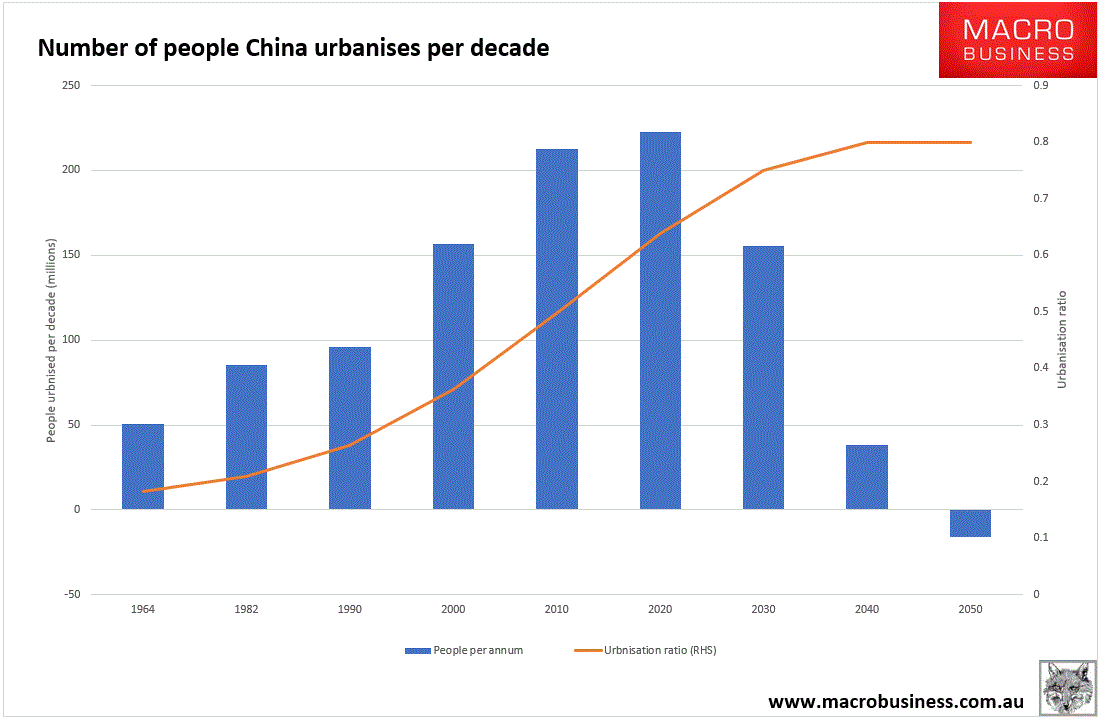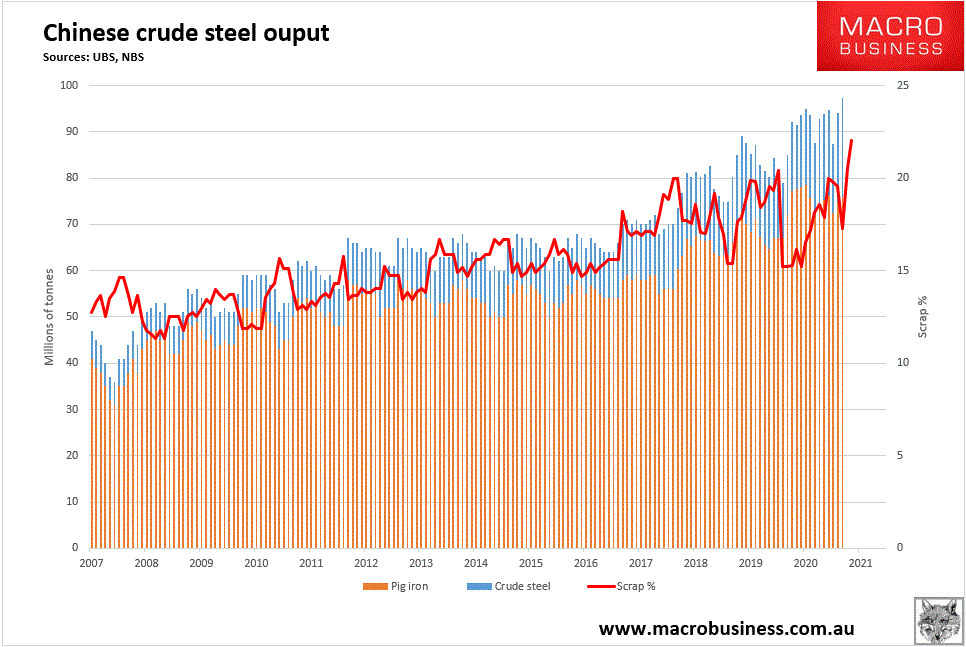The arrogance emanating from Australian commentary about its iron ore shipments to China in recent times has been something to watch. There is a collective failure of imagination in the inability to envision the end of the trade.
Yet that is what will come, in large part. Today Sinocism has some good advice:
- Julian Evans-Pritchard of Capital Economics wrote in the recent research note “Dependence on Australian iron ore set to decline” that: In the short-run, China has no choice but to grit its teeth and keep buying Australian iron ore, even as bilateral ties continue to fray. But this dependence will diminish over time thanks to increased supply from other sources, greater use of recycled steel and a structural decline in Chinese steel demand. It may be feasible for China to cut off Australian iron ore shipments by the middle of the decade. He argues that the combination of increased domestic ore production, faster adoption of electric arc furnaces that can use scrap steel, expansion of overseas production and a drop in demand could make it eventually “feasible for the country to cut off shipments from Australia and still source enough from elsewhere to meet its needs”.
- The CCP has hated Australian iron ore gouging for many years but there was never a strategic imperative to fix it. Now there is.
- The analogy is the semiconductor reliance upon the US which the CCP is also in the process of investing its way out of.
- In the Xi Jinping era, everything is national security and Australian iron ore now sits in that frame of reference.
I doubt that China could cut off Aussie iron ore fully by mid-decade. But it could very well be in a position to cut off large slabs of it by then.
Consider that by mid-decade Brazil and Africa will have added 200mt of new supply. That can conceivably come straight out of Australian volumes.
There are two other very large swing factors. The first is that Chinese urbanisation is running out of runway. At 64%, it does not have far to get to the typical 80% of modern economies. China could go flat chat to that target and reach it by 2030.
If we consider that there are likely 70m empty apartments, and vast swathes of shiny new infrastructure, then it’s hard to avoid the conclusion that some large slice of the building needed for the last spurt of 200m freshly urbanised citizens isn’t already built.
Sure, China can overbuild, but at some point in the coming decade the pace of urbanisation construction is going to have to slow a lot. When it does, it will knock a huge hole in iron ore demand, upwards of 20% of steel output eventually:

That eliminates another 300mt of iron ore from the seaborne market over whatever timeframe you care to choose.
Finally, there is scrap. Scrap inputs have been growing strongly for years:

The proportion of scrap inputs via EAF and BOF has doubled in a decade. At the current rate of climb, it will be 30% by 2025. Assuming flat steel output, that will knock another 160mt of iron ore out of the seaborne market.
So, that’s 660mt of iron ore that China conceivably will not need at some point in the next decade. As it happens, Australian iron ore shipped 732mt of it in 2020.
Pick your timeframe. Pick your poison. But don’t doubt it. At some point in the 2020s, China is going to demolish the Australian iron ore trade. Now that we have declared for the US liberal empire, it has no choice.
If we had any brains or ethics we’d be saving every iron ore penny today.
Meh, bid up that house!

